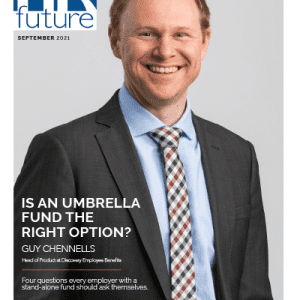In a COVID-stricken economy, employee motivation and productivity are being hampered by salary cuts and reduced working hours.
Employers are looking for innovative remuneration solutions that will inspire their workforce while preserving their own constrained finances.
According to Tosen, there is indeed a strategy that fits the bill in the current economic climate.
Remuneration models
Generally, three main remuneration approaches are followed in South Africa. The first, being a basic plus benefits structure, is a gamble for most organisations. With a fixed basic salary and variable benefits added over and above, the burden of any increases on these employer contributions following rate changes, mainly falls on the employer.
The second structure being the classic cost to company model, pays a fixed total remuneration package, that incorporates both, salary and benefits. Increased contributions to benefits and subsequently the tax impact are then borne by the employee, leaving them at a disadvantage.
The recommended strategy to follow, is to implement a cost to company with flexible benefits structure, which strikes a fair balance between the two previous models. Employers enjoy the advantages of a fixed cost to company strategy while employees are able to structure their packages in line with their present needs. This optimal model offers the following key practical benefits:
- Cost containment
Because employee remuneration costs remain fixed, any variation in contributions and taxes have no effect on their total cost to company. Employers are therefore spared the regular cost fluctuations suffered within the basic plus benefits model.
- Employee empowerment
Employees can restructure their packages, either selecting more cash thereby increasing their take home pay or channeling earnings to preferred benefits. In these uncertain times, workers who have greater control over their financial situation tend to be more motivated and, consequently, more productive.
- Cash flow predictability
With costs contained, employers will find it easy to project their total workforce costs throughout the year and plan accordingly. This means they can budget and allocate funds without fearing that unforeseen labour expenditures may lead to a potential cash flow crisis.
- Talent attraction and retention
In spite of cost cutting, the battle to attract and retain top talent remains a priority for most employers. The cost to company with flexible benefits model is a magnet to both new and existing employees because of their desire for greater control over their financial position.
- Internal parity
South African labour law requires that employees are given equal pay for work of equal value. This model facilitates pay parity because employee packages are fixed across similar roles, therefore streamlining the benchmarking functionality. What employees earn is readily comparable regardless of differences in how their packages are structured internally.
- Tax optimisation
Employers can inject their packages with greater value by helping employees reduce their tax obligation and not pay more than they legally should. The flexible benefits model lends itself to tax optimisation more than any of the other remuneration pay structures.
Conclusion
At a time when organisations’ ability to offer more attractive rewards is severely impeded, the cost to company with flexible benefits remuneration pay strategy is fast becoming the go-to remuneration model.
The balanced set of benefits it offers makes it the best strategy for controlling costs while liberating workers to meet their own financial commitments.



















